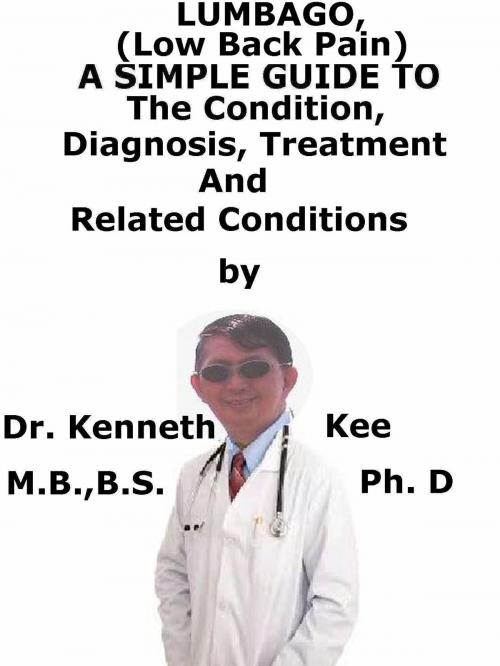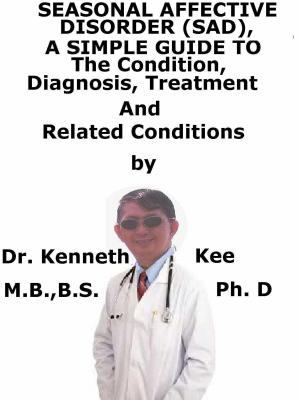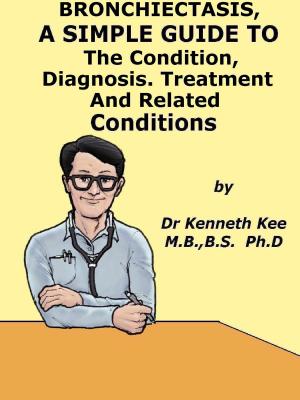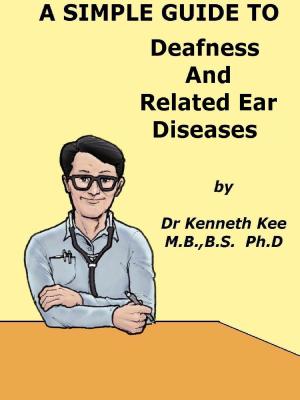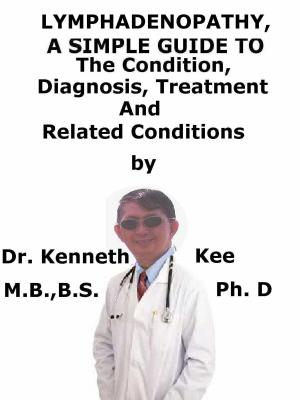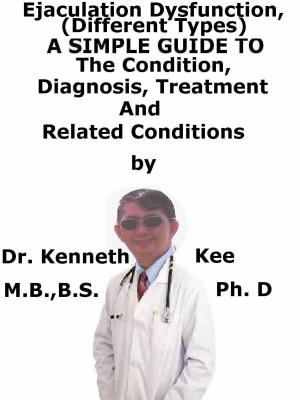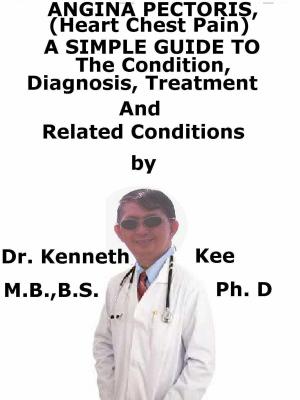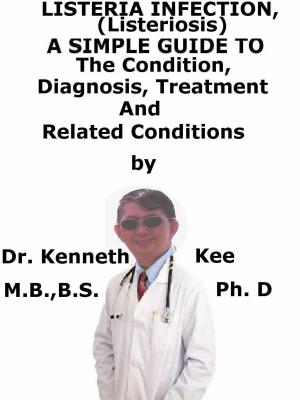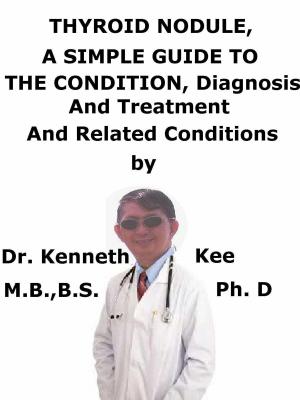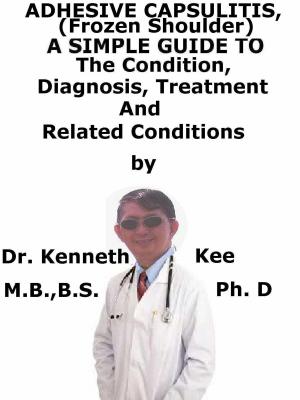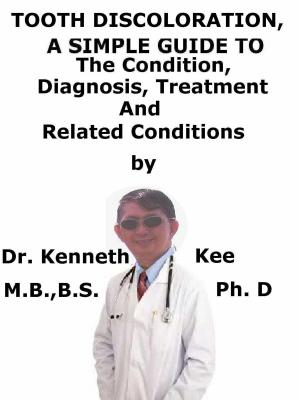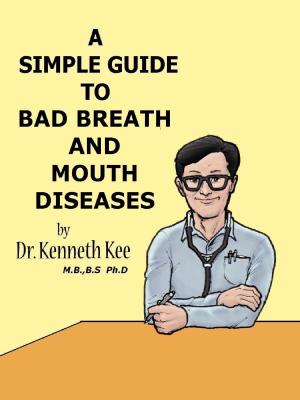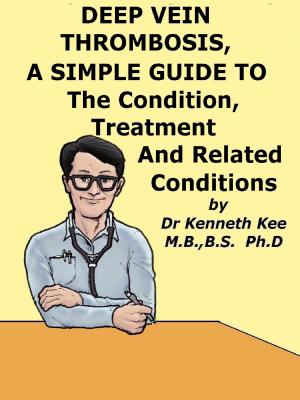Lumbago (Low Back Pain), A Simple Guide To The Condition, Diagnosis, Treatment And Related Conditions
Nonfiction, Health & Well Being, Health, Ailments & Diseases, Musculoskeletal, Medical, Specialties, Orthopedics| Author: | Kenneth Kee | ISBN: | 9781370531714 |
| Publisher: | Kenneth Kee | Publication: | March 10, 2017 |
| Imprint: | Smashwords Edition | Language: | English |
| Author: | Kenneth Kee |
| ISBN: | 9781370531714 |
| Publisher: | Kenneth Kee |
| Publication: | March 10, 2017 |
| Imprint: | Smashwords Edition |
| Language: | English |
Lumbago is often termed as pain in the lower part of the back (Lumbar region).
It can be described as mild to severe pain or discomfort in the region of the lower back.
The pain can be acute (sudden and severe) or chronic if it has persisted more than three months.
Most people will have an incident of lumbago at some point in their life.
It can happen at any age but is a special problem in younger people whose work requires physical effort and much later in life, in the elderly.
In most patients it resolves in a few weeks but for some it is a persistent disorder.
More men have lumbago than women.
Backache is most frequent among people in their middle age.
Back pain is second only to colds and flu.
The patients will normally first experience back pain just after the patient carries a heavy object, moves suddenly, sits in one location for a long time, or has a trauma or accident.
Acute low back ache is most often produced by a sudden injury to the muscles and ligaments supporting the back.
Causes of sudden low back pain are:
1. Compression fractures to the spine from osteoporosis
2. Cancer affecting the spine
3. Injury of the spinal cord
4. Spasm of the muscles (very tense muscles)
5. Ruptured or herniated disk
6. Sciatica
7. Spinal stenosis (narrowing of the spinal canal)
8. Spine curvatures (scoliosis or kyphosis), which may be inherited and seen in children or teens
9. Strain or tears to the muscles or ligaments supporting the back
Low back pain may also be caused by:
1. An abnormal aortic aneurysm that is leaking
2. Arthritis conditions, such as osteoarthritis, psoriatic arthritis, and rheumatoid arthritis
3. Infection of the spine (osteomyelitis, diskitis, abscess)
4. Kidney infection or kidney stones
5. Problems linked to pregnancy
6. Medical disorders that involve the female reproductive organs, such as endometriosis, ovarian cysts, ovarian cancer, or uterine fibroids
In most patients, a back problem can be diagnosed by a doctor from the information given by the patient.
In some patients an X-ray or MRI of the spine can be very helpful to evaluate the health of the inter-vertebral discs, examine for fractures and test for compression of the nerves.
Bone density test is useful to rule out osteoporosis.
Acute low back pain treatment
1. Use simple painkillers, NSAIDs and muscle relaxant regularly.
2. Activity is helpful for the muscles
3. Good posture is important
4. Rest and sleep lying on a hard, flat surface, if possible.
5. Avoid bending, lifting, stooping, and sitting on low chairs
Chronic low back pain
1. A structured exercise program, which should be individualized to the person and consists of up to a maximum of 8 sessions over a period of up to 12 weeks
2. A course of manual therapy such as physiotherapy
3. Treatments of unknown effectiveness are: muscle relaxants, colchicine, antidepressants, epidurals, steroid injections, acupuncture, TENS, physical treatments, lumbar supports, advice to stay active
4. Treatment that is not likely to be beneficial: bed rest, EMG biofeedback.
5. Treatment that is likely to be ineffective or harmful: facet joint injections, traction.
Danger signs of low back pain:
If the patient suddenly discovers that the patient is unable to control the bladder or bowel movements or if the area of the lower back or legs suddenly becomes numb or weak, contact a doctor or accident and emergency (A&E) immediately.
If the patient suffers from backaches and observe reduced strength or muscle bulk in one or both legs, the patient should also get examined by a doctor.
TABLE OF CONTENT
Introduction
Chapter 1 Lumbago
Chapter 2 Cause
Chapter 3 Symptoms
Chapter 4 Diagnosis
Chapter 5 Treatment
Chapter 6 Prognosis
Chapter 7 Sciatica
Chapter 8 Ankylosing Spondylosis
Epilogue
Lumbago is often termed as pain in the lower part of the back (Lumbar region).
It can be described as mild to severe pain or discomfort in the region of the lower back.
The pain can be acute (sudden and severe) or chronic if it has persisted more than three months.
Most people will have an incident of lumbago at some point in their life.
It can happen at any age but is a special problem in younger people whose work requires physical effort and much later in life, in the elderly.
In most patients it resolves in a few weeks but for some it is a persistent disorder.
More men have lumbago than women.
Backache is most frequent among people in their middle age.
Back pain is second only to colds and flu.
The patients will normally first experience back pain just after the patient carries a heavy object, moves suddenly, sits in one location for a long time, or has a trauma or accident.
Acute low back ache is most often produced by a sudden injury to the muscles and ligaments supporting the back.
Causes of sudden low back pain are:
1. Compression fractures to the spine from osteoporosis
2. Cancer affecting the spine
3. Injury of the spinal cord
4. Spasm of the muscles (very tense muscles)
5. Ruptured or herniated disk
6. Sciatica
7. Spinal stenosis (narrowing of the spinal canal)
8. Spine curvatures (scoliosis or kyphosis), which may be inherited and seen in children or teens
9. Strain or tears to the muscles or ligaments supporting the back
Low back pain may also be caused by:
1. An abnormal aortic aneurysm that is leaking
2. Arthritis conditions, such as osteoarthritis, psoriatic arthritis, and rheumatoid arthritis
3. Infection of the spine (osteomyelitis, diskitis, abscess)
4. Kidney infection or kidney stones
5. Problems linked to pregnancy
6. Medical disorders that involve the female reproductive organs, such as endometriosis, ovarian cysts, ovarian cancer, or uterine fibroids
In most patients, a back problem can be diagnosed by a doctor from the information given by the patient.
In some patients an X-ray or MRI of the spine can be very helpful to evaluate the health of the inter-vertebral discs, examine for fractures and test for compression of the nerves.
Bone density test is useful to rule out osteoporosis.
Acute low back pain treatment
1. Use simple painkillers, NSAIDs and muscle relaxant regularly.
2. Activity is helpful for the muscles
3. Good posture is important
4. Rest and sleep lying on a hard, flat surface, if possible.
5. Avoid bending, lifting, stooping, and sitting on low chairs
Chronic low back pain
1. A structured exercise program, which should be individualized to the person and consists of up to a maximum of 8 sessions over a period of up to 12 weeks
2. A course of manual therapy such as physiotherapy
3. Treatments of unknown effectiveness are: muscle relaxants, colchicine, antidepressants, epidurals, steroid injections, acupuncture, TENS, physical treatments, lumbar supports, advice to stay active
4. Treatment that is not likely to be beneficial: bed rest, EMG biofeedback.
5. Treatment that is likely to be ineffective or harmful: facet joint injections, traction.
Danger signs of low back pain:
If the patient suddenly discovers that the patient is unable to control the bladder or bowel movements or if the area of the lower back or legs suddenly becomes numb or weak, contact a doctor or accident and emergency (A&E) immediately.
If the patient suffers from backaches and observe reduced strength or muscle bulk in one or both legs, the patient should also get examined by a doctor.
TABLE OF CONTENT
Introduction
Chapter 1 Lumbago
Chapter 2 Cause
Chapter 3 Symptoms
Chapter 4 Diagnosis
Chapter 5 Treatment
Chapter 6 Prognosis
Chapter 7 Sciatica
Chapter 8 Ankylosing Spondylosis
Epilogue
